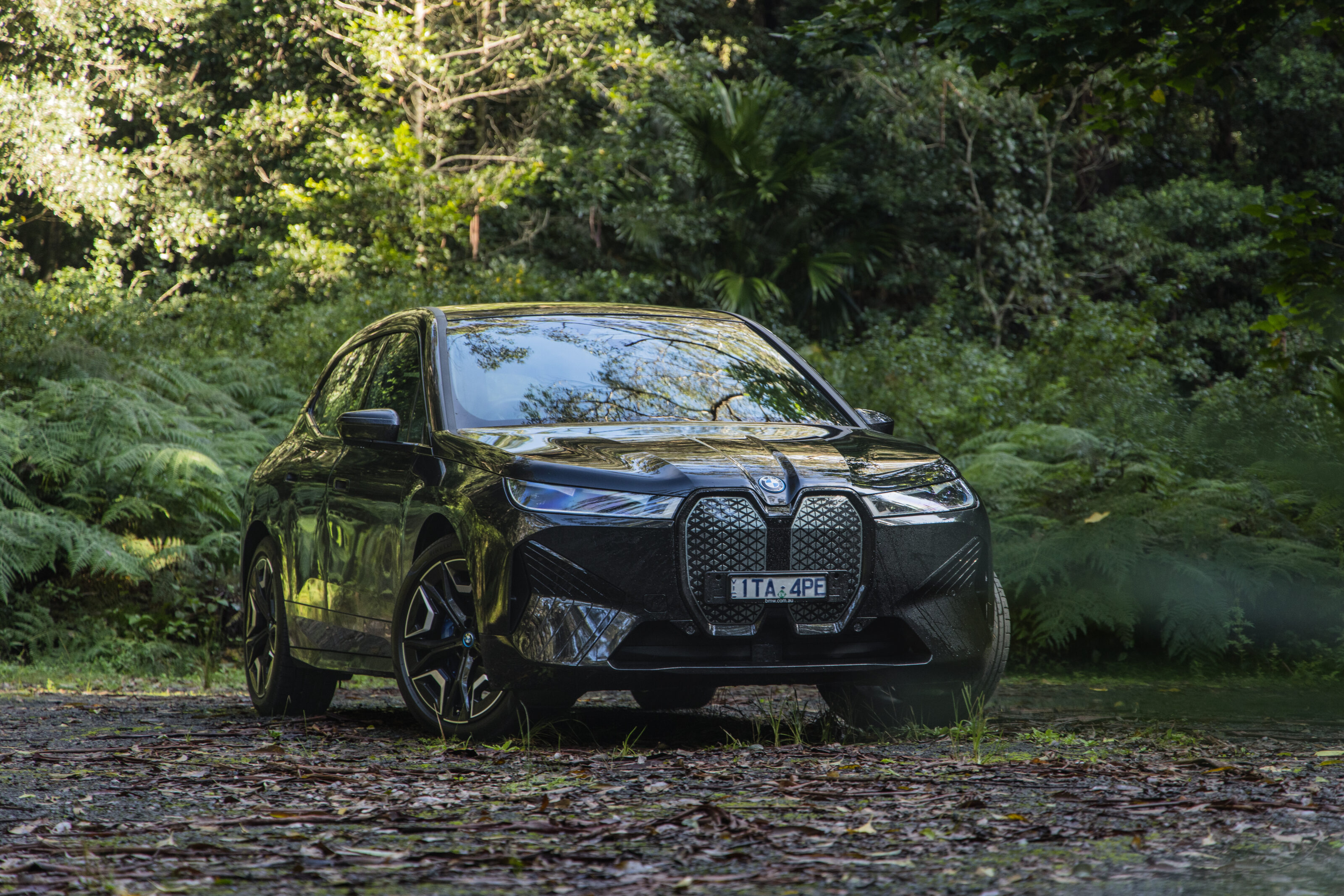
Score breakdown
Things we like
- Fantastic interior
- Great to drive
- Nice balance of EV wow and normal car vibes
Not so much
- Short warranty
- Ride can get lumpy
- Needs another few kWhs in the battery
Key Points
- 420km range for iX 40, 620km for iX 50
- iX 50 hits 100km/h in 4.6 seconds (claimed)
- Range priced from $135,900
Like it or not, flagship electric vehicles from most manufacturers are SUVs like the 2022 BMW iX tested here because that’s what buyers insist upon. BMW’s M boss Frank van Meel even admitted electric SUVs are what they want – and that’s just the way it is.
And so it was with a somewhat heavy heart when I saw BMW pull the covers off what has become the new iX that it wasn’t an ‘iM5’ or something equally unlikely.
Big SUVs are big business, and BMW was part of the genesis of the step change in the motoring industry that has very nearly killed the sedan. The company itself insisted that its first mainstream EV would be a 3 or 5 Series-sized car but almost overnight that honour went to the iX3, an electrified X3.

The i4 came along first in concept and then production form, and hot on its heels came something quite different, philosophically and stylistically.
Drawing on the BMW i forebears that paved the way, the i3 and the i8, the iX sets the benchmark for future BMW EVs with its construction of carbonfibre and aluminium plus a genuinely inventive and more sustainable interior.
The question is, does BMW do the same thing for this segment as it did to define the sports sedan?
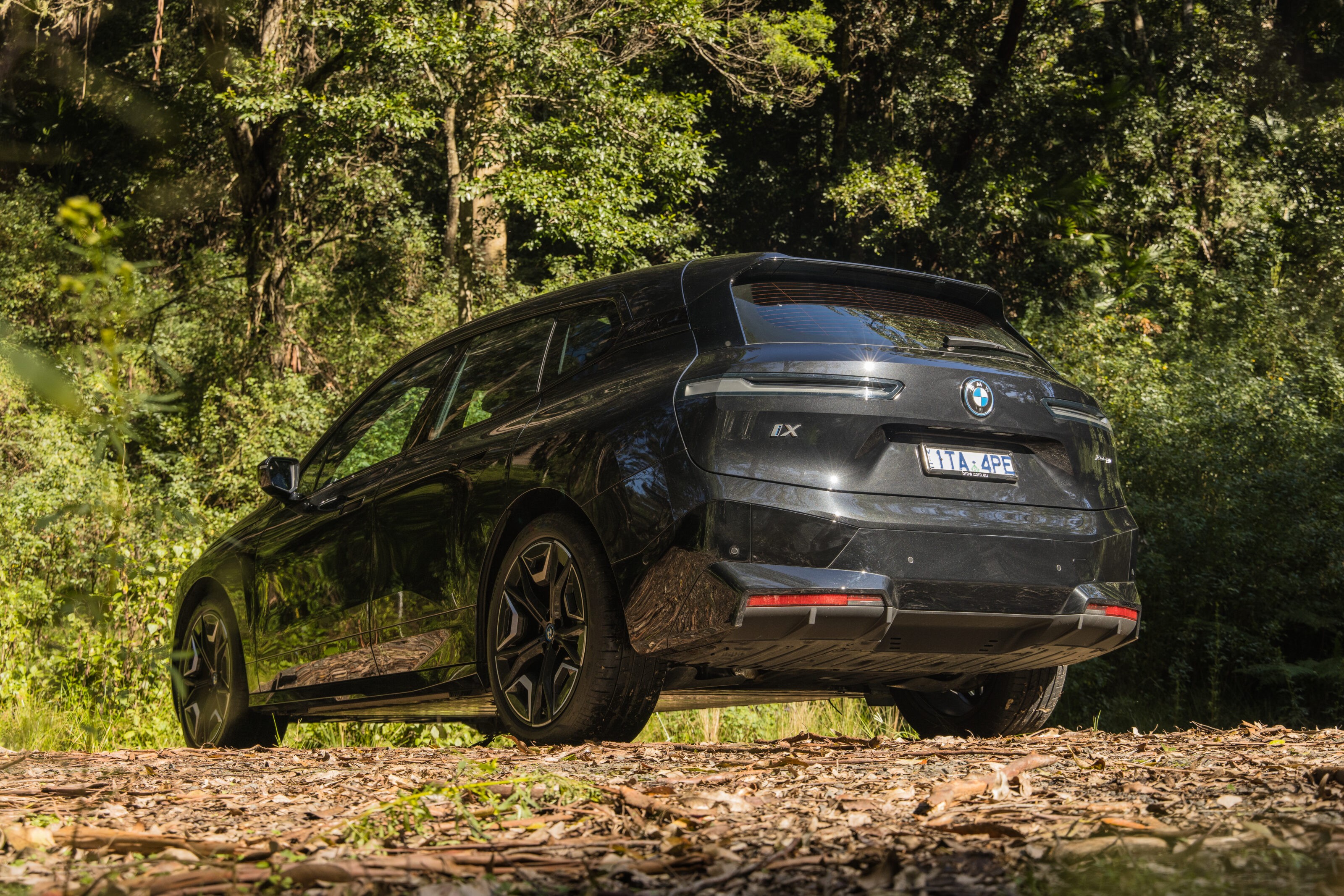
Like it or not, flagship electric vehicles from most manufacturers are SUVs like the 2022 BMW iX tested here because that’s what buyers insist upon.
Pricing and features
The iX 40 xDrive comes in two battery capacities and three specifications, starting at $135,900 before on-road costs. For that you get 21-inch wheels, auto LED headlights, 18-speaker stereo, 2.5 zone climate control, heated and massaging front seats, and keyless entry/start.
There’s also a head up display, active cruise control, 12.3-inch curved digital dash, reversing camera, around-view cameras, front, side and rear parking sensors, heated and folding rear vision mirrors, auto wipers, olive-tanned leather interior, wireless charging and a tyre repair kit.
The Comfort Access system means you can use your phone or an NFC card to get into the car and open the tailgate.
BMW’s excellent OS8 is displayed in the 14.9-inch curved display that sits in the same housing as the instrument panel. You get wireless Apple CarPlay and Android Auto, DAB+ digital radio, sat-nav and a whole host of other features to keep you occupied. It can be operated by both touch and the iDrive controller.

Metallic paint is $2000 which, frankly, is a lot of damn money.
Stepping up to the $141,900 iX xDrive 40 Sport gets you 22-inch alloys, metallic paint, some blacked-out bits, darkened headlight lenses and blue brake calipers.
The 50 is $169,900 before on-road costs with a huge 112kWh battery, 22-inch wheels, laser headlights, active steering, adaptive air suspension, whacky electrochromic sunroof and soft-close doors. It also gets a bump in power and torque to help shift its two-and-a-half tonne kerb weight.

Several packages are available across 40 and 40 Sport variants. For $3500 you get the Comfort Pack with ventilated seats, heated steering wheel and a bunch of heated armrests. Heated surfaces are better for the battery in a cold climate than running the heating.
You can pay $9500 for an Enhancement Pack that adds the awesome laser lights, glass roof with electrochromic tinting and soft-close doors. The car I drove had this added.
And you can pay $8000 for a 30-speaker Bowers and Wilkins stereo and an internal camera. Internal to the car, not you. That wouldn’t be any fun and trust me I know, I have reached that age. The camera looks for people smiling and takes a photo. BMW says it’s not sent to the cloud and you can retrieve it from the car’s own storage via the BMW Connected app.

A five-star ANCAP rating is a direct transfer of the EuroNCAP score, which is part of a long-standing agreement between the two organisations.
The iX comes with six airbags, the usual traction and stability controls, auto emergency braking with pedestrian, cyclist and junction assist, forward collision warning, blind-spot monitoring, lane change and lane-keep assist, front and rear cross-traffic alert, rear AEB, evasive steering assist and speed limit assist.
You also get three top-tether anchors and two ISOFIX points for securing child seats.

Comfort and space
The iX’s interior will surely go down as one of the greats because it looks incredible but also feels incredible. A lot of effort has gone into keeping owners’ delicate fingertips from touching anything as gauche as plastic, with very, very few instances of such a substance.
Fake and real leather swathes the cabin and where it doesn’t go you’ll find metallic finishes, cut crystal-like glass for the iDrive controller and shifter and a wooden panel surround. Only the handbrake and auto-hold buttons are plastic, along with the hidden mechanical releases for the doors (for if there’s a problem with the grab-handle mounted electronic door releases).
Add the optional electrochromic sunroof, which goes from clear to opaque with the touch of a button and it’s really, genuinely special here. The front seats look big and overstuffed but are very comfortable and hold you in nicely. The massage function isn’t terribly exciting but I guess you don’t want it getting too frisky.
The iX’s interior will surely go down as one of the greats because it looks incredible but also feels incredible.
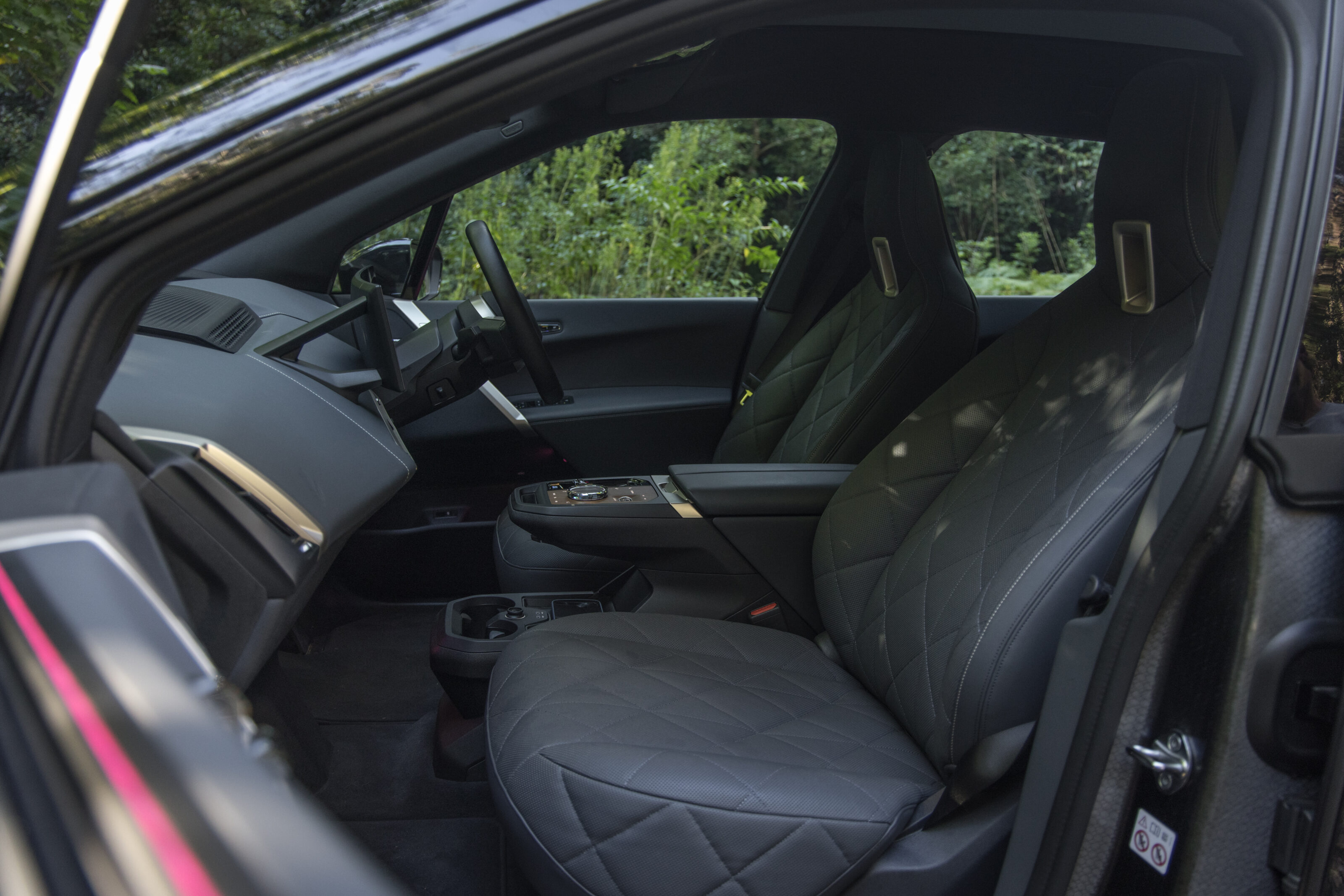
To go with the wireless phone charging, attached to the front of the floating console are two 12-volt and two USB-C sockets in the front, two cup holders and giant bottle holders in each door.
In the rear, you have a gigantic amount of space that is made more enjoyable by lots of glass and therefore lots of light. You have two USB-C ports in the back of each front seat, your own climate controls (the Sport and 50 have dual-zone in the rear) and cup holders in the centre armrest.
If this sort of thing bothers you, the glass in the rear doors only goes down to about halfway. I know that irritates some people, so you’ve been warned.
The BMW iX’s boot space comes in at 500 litres. Occupant space has obviously been the priority here given the limo-like rear seat and some have complained that 500L isn’t much for a car this size. Fair enough. Folding the 40:20:40 split-fold bench triples the space to 1750 litres. Under the boot floor is a great spot for your charging cables and there is also a cargo net stored there.
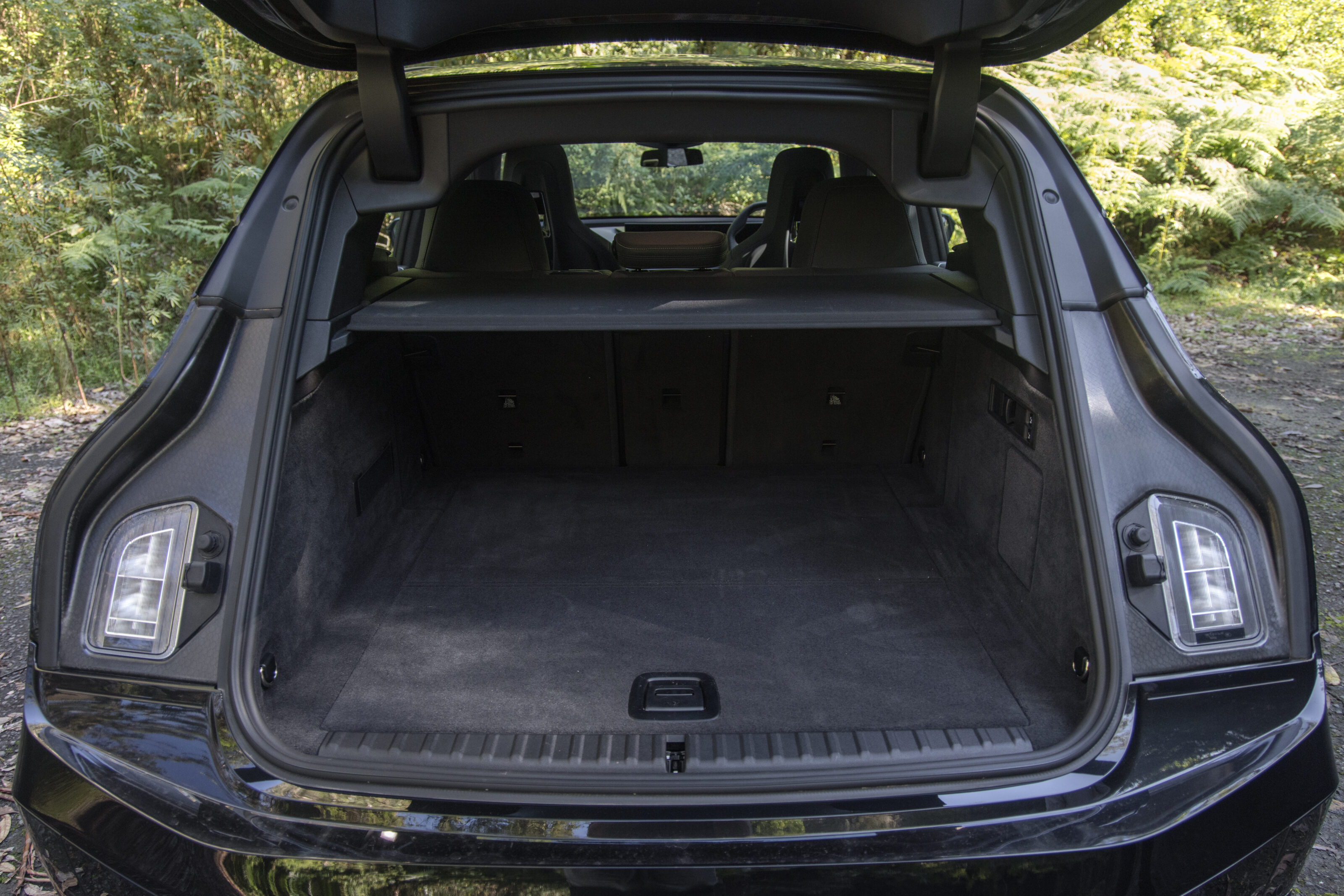
As part of BMW’s commitment to sustainability, the leather is tanned with olive leaves (and there’s an olive leaf motif in the dash in front of the passenger), 60kg of the plastics are recycled, large amounts of the battery’s metals are in what BMW calls “second use” (upcycled, I guess) and the floor mats are made of recycled fishing nets.
It’s not a lot, but it’s a start and there’s none of this stupid “the car has an NFT to track the materials from cradle to grave” which is incredible nonsense when a simple database can do the same thing without a massive carbon footprint.
BMW has not yet succumbed to the blockchain bros and hopefully it never does. Yes, I may have just read the Wheels review of the Alfa Romeo Tonale and no, I am not cranky about the NFT thing, I’m furious.
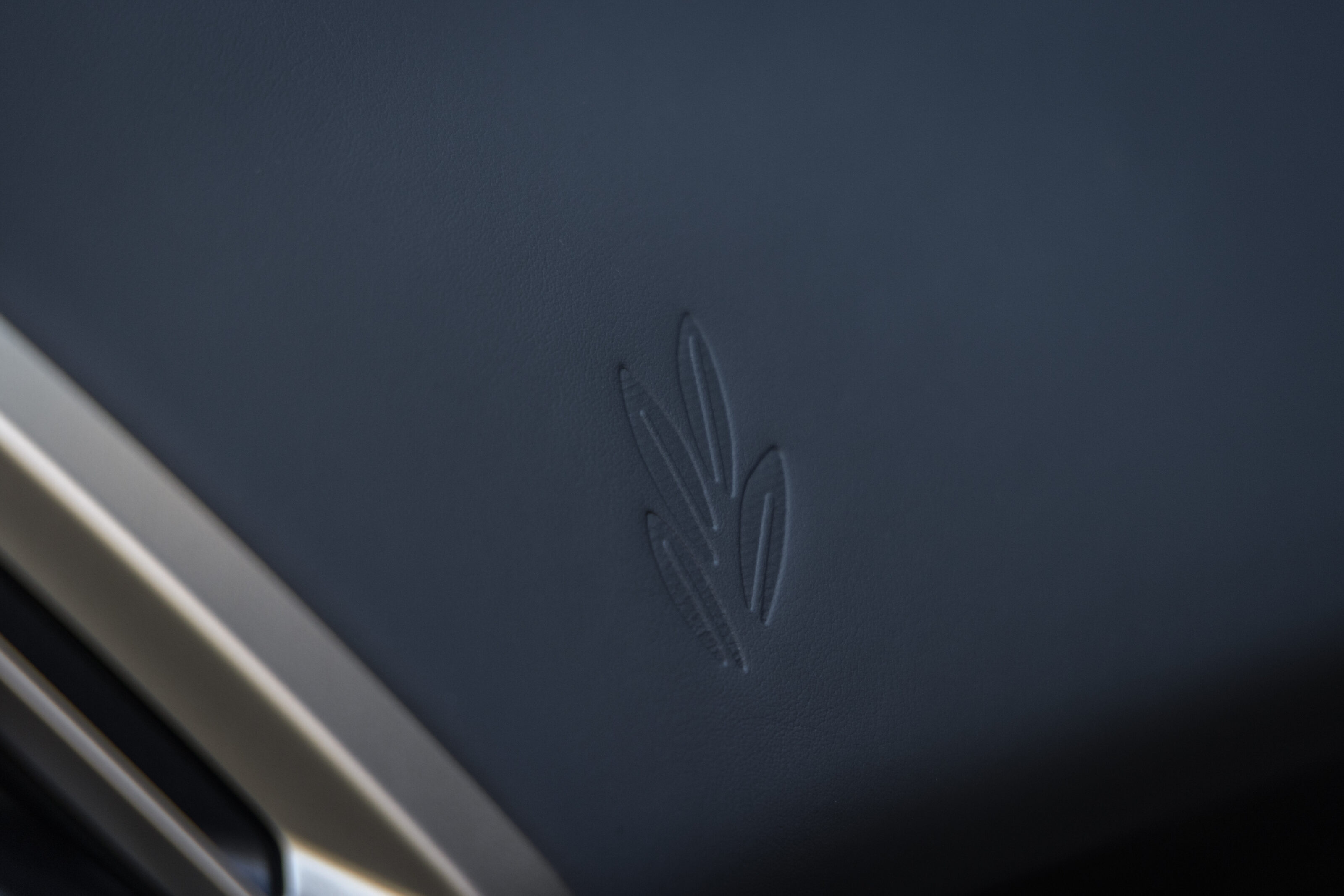
Battery and charging
The 77kWh battery pack underneath the iX 40 has a range of 420km on the WLTP cycle from its 71kWh of useable capacity. Charging at home is going to be slow, from around 2kW through to 11kW if you have three-phase power and the right wallbox.
When you head to a fast-charging station, the iX 40 will charge at up to 150kW and add about 95km of range in ten minutes as long as you have at least ten per cent of charge and the charger is giving you full beans, which they rarely do.
By comparison, the iX 50 comes with a gigantic 112kWh battery for a range of up to 620km. You can charge faster with this one at up to 200kW. It’s not the fastest available but, in practical terms, you’ll have trouble finding a charging station to offer that kind of grunt.
BMW gives you a five-year Chargefox subscription for unlimited charging, so it’s worth finding out where your nearest station is. And when they’re planning on fixing it.
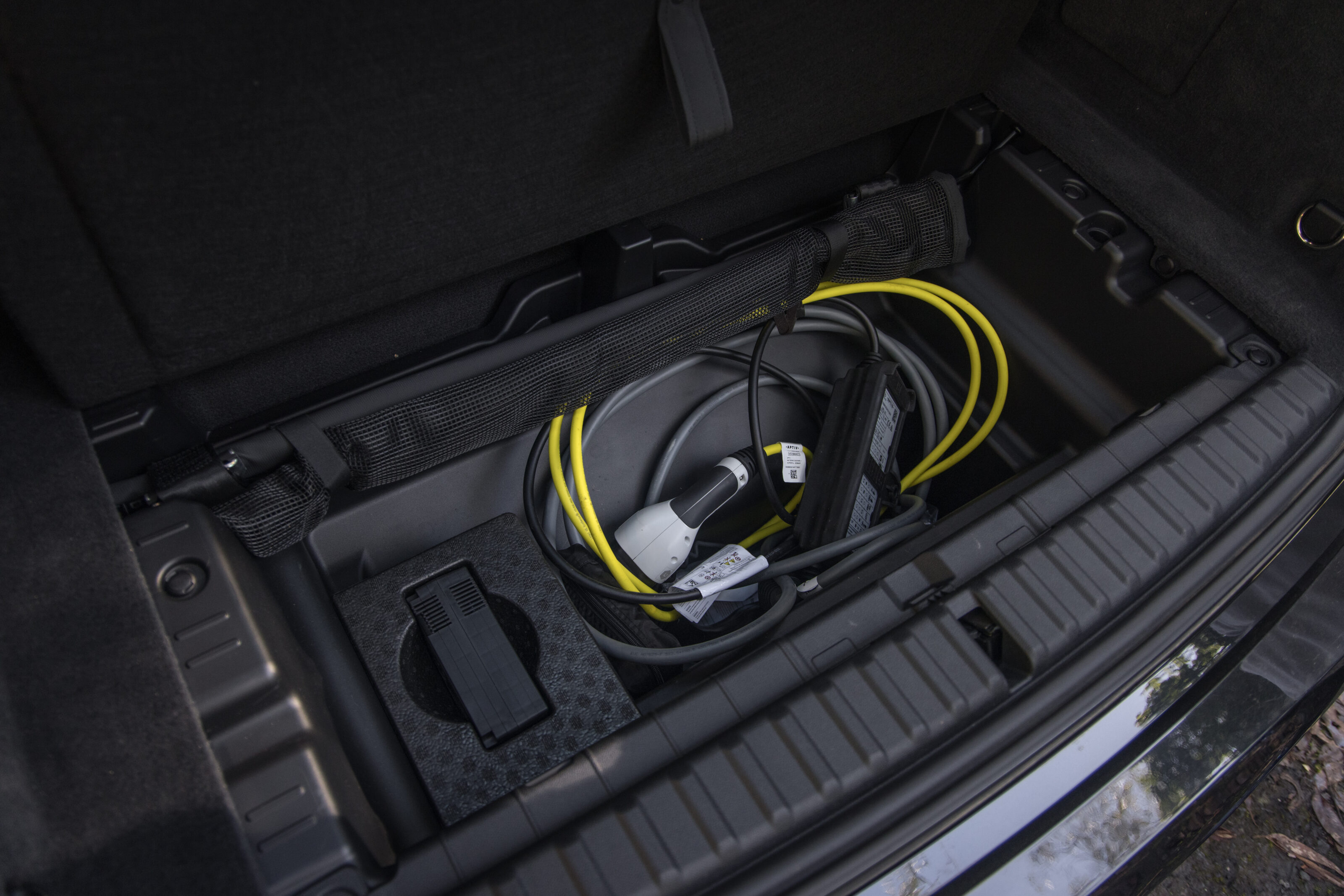
On the road
The iX 40 might be the entry-level car but it’s got two electric motors punching out 240kW and 630Nm through a single-speed transmission.
Like the iX3, the motors are of the current-excited synchronous variety, which means they don’t have any magnets, so no rare metals were dragged out of the ground to make them. The battery is still full of them though, but you can’t have everything.
Stepping up to the iX 50, you get a massive 385kW of power and 765Nm of torque. That cuts 1.5 seconds off the iX40’s 6.1-second 0-100km/h time for a rapid 4.6 seconds.
Pity it isn’t 500kg lighter; this thing would really shift.
The official power consumption figure for the 40 is 22.5kWh/100km while the 50 slurps electrons slightly faster at 23kWh/100km.
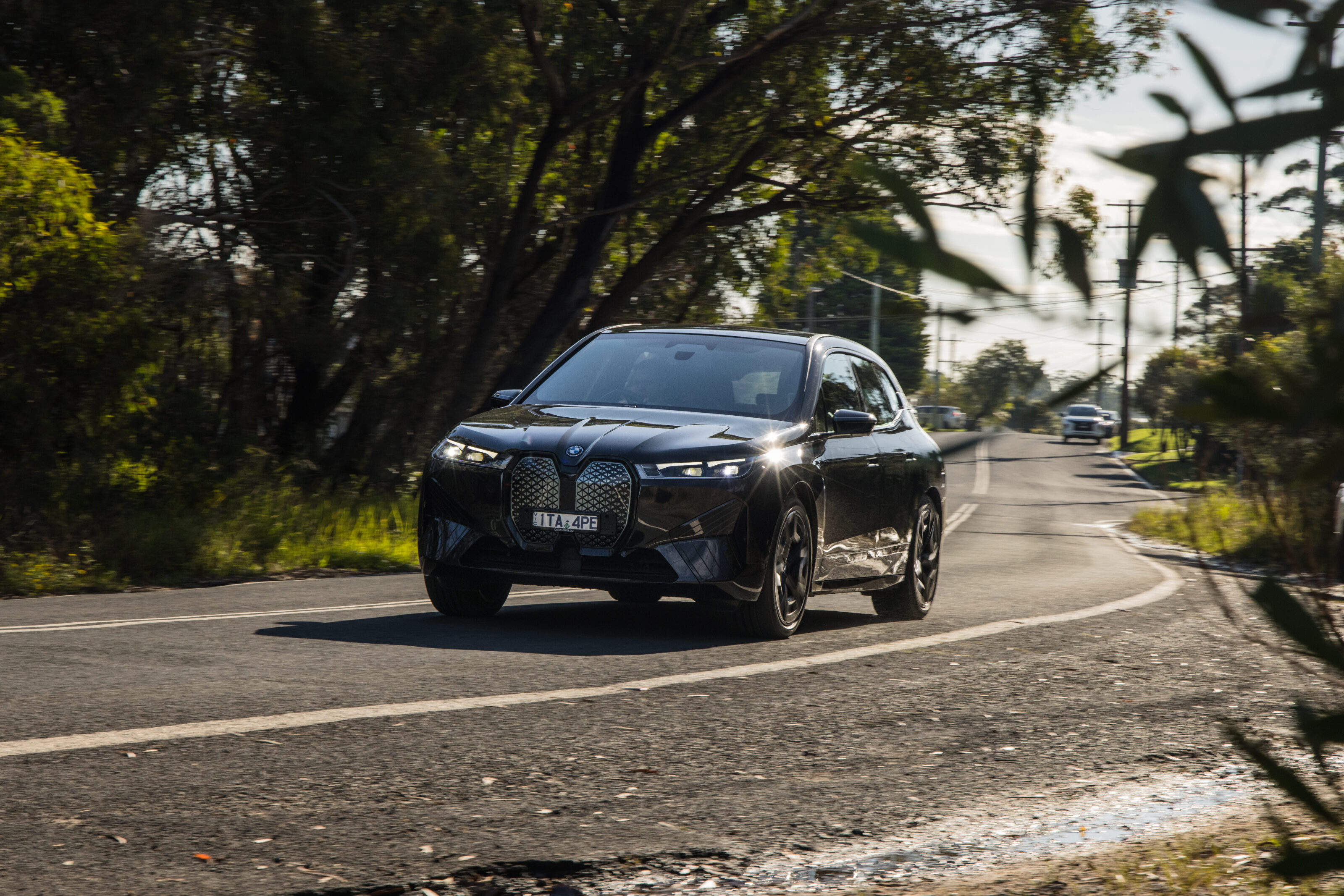
I had the mid-spec iX40 Sport for a week that, given I live in Sydney, was mostly wet. The day we shot the video was one of the very few days we’ve had where it wasn’t chucking it down all day.
Even though the weather has made me grumble a lot, it’s very good for assessing a car’s overall capability.
This car is unlike anything else in the current BMW range. It does use a lot of CLAR bits and pieces (CLAR is BMW’s rear-wheel drive cluster architecture) but is not like the i4 or iX3, which are clearly ICE cars with EV bits swapped in.
Like the i3 city car before it, the iX has a mix of aluminium and carbonfibre (with some high-strength steel) for the body and shell as well as composite panels. The car is not based on BMW’s dedicated EV platform known as Neue Klasse.

The iX is basically unflappable. Despite dragging nearly 2500kg around on its big 22-inch wheels, it’s only in specific circumstances you’ll find the ride getting messy and even then, it’s just something you notice rather than something that will irritate you.
Steering weight is perhaps a little lighter than I’m used to in a BMW (and the hexagonal steering wheel is annoying) but in the city, that doesn’t really matter.
You get enough info from the Pirellis and the road to know what’s going on and that BMW feeling of being firmly planted on terra firma is present and correct but without a feeling of excessive heft.
The iX is basically unflappable.
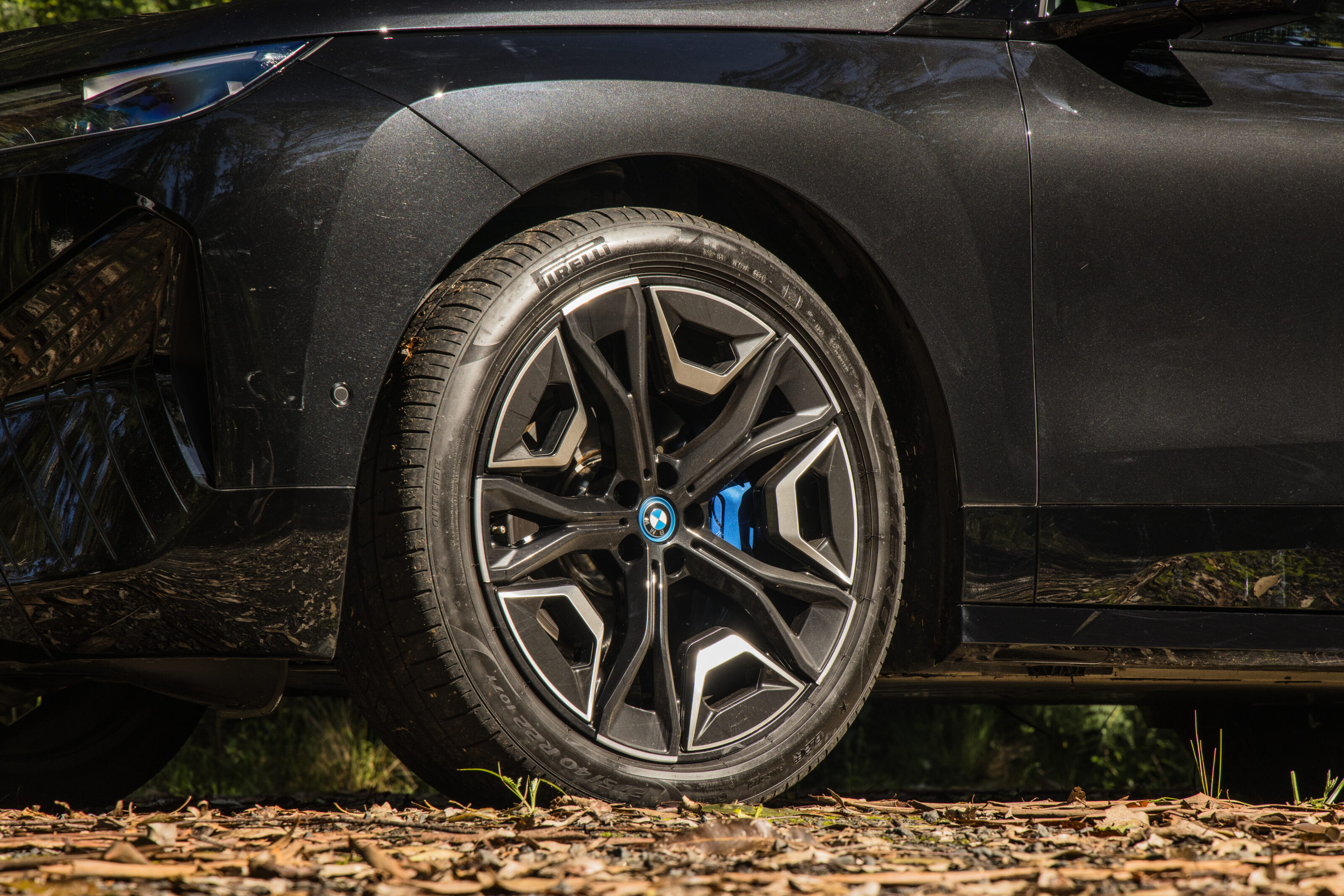
It’s extremely quiet both in town and at a cruise, no doubt plenty of that weight going to thicker glass and lashings of sound deadening to reduce the invasion of noise into the lovely cabin.
It’s a brilliant place to spend time, the comfort of the seats never running thin. And even the “basic” stereo is excellent.
While the iX gets decently close to its 420km WLTP in real-world driving, it’s that basic figure that has me wrinkling my nose. To really hammer home the car’s advantage over its obvious rivals – Audi e-Tron, the COTY-winning Mercedes EQC and Jaguar i-Pace – the range really needs to be another fifty or sixty kilometres, or another five to ten kWh of battery capacity.
BMW does a better job of getting you close to the stated range than some cars costing around half the price (looking at you Polestar and Volvo) and some cars costing rather more, so I guess that’s where the company has settled.
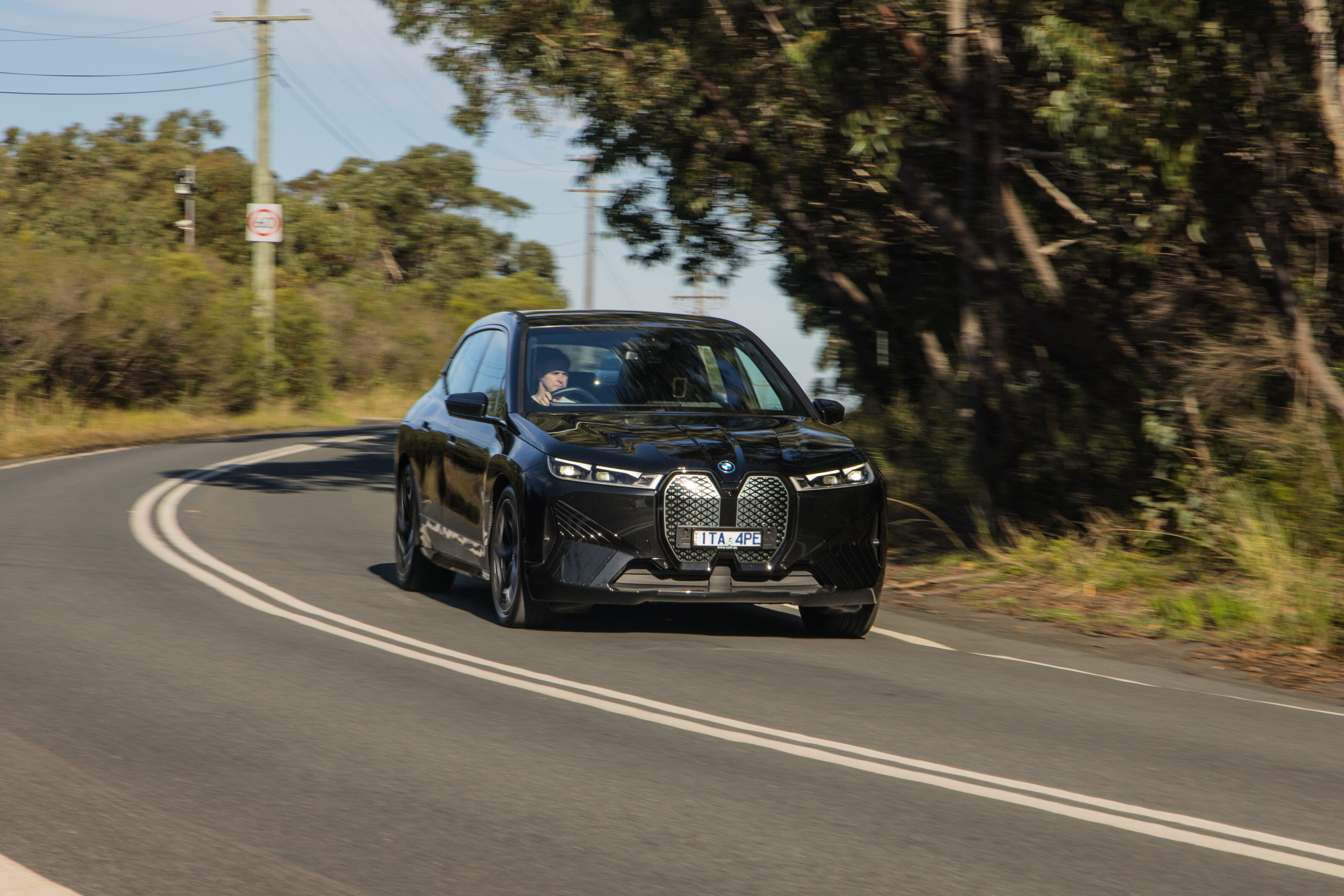
BMW does a better job of getting you close to the stated driving range than some cars costing around half the price.
Ownership
BMW persists with a three-year, unlimited-kilometre warranty, which really sticks in my craw considering all of its immediate rivals have moved to five years, long after the bulk of the industry had also moved there.
The battery warranty is competitive at eight years/160,000km, which is competitive with the rest of the EV landscape, so there’s at least some progress there.
A five-year Chargefox subscription to that company’s fast-charging network is free, meaning you could (technically) never pay for fuel again.
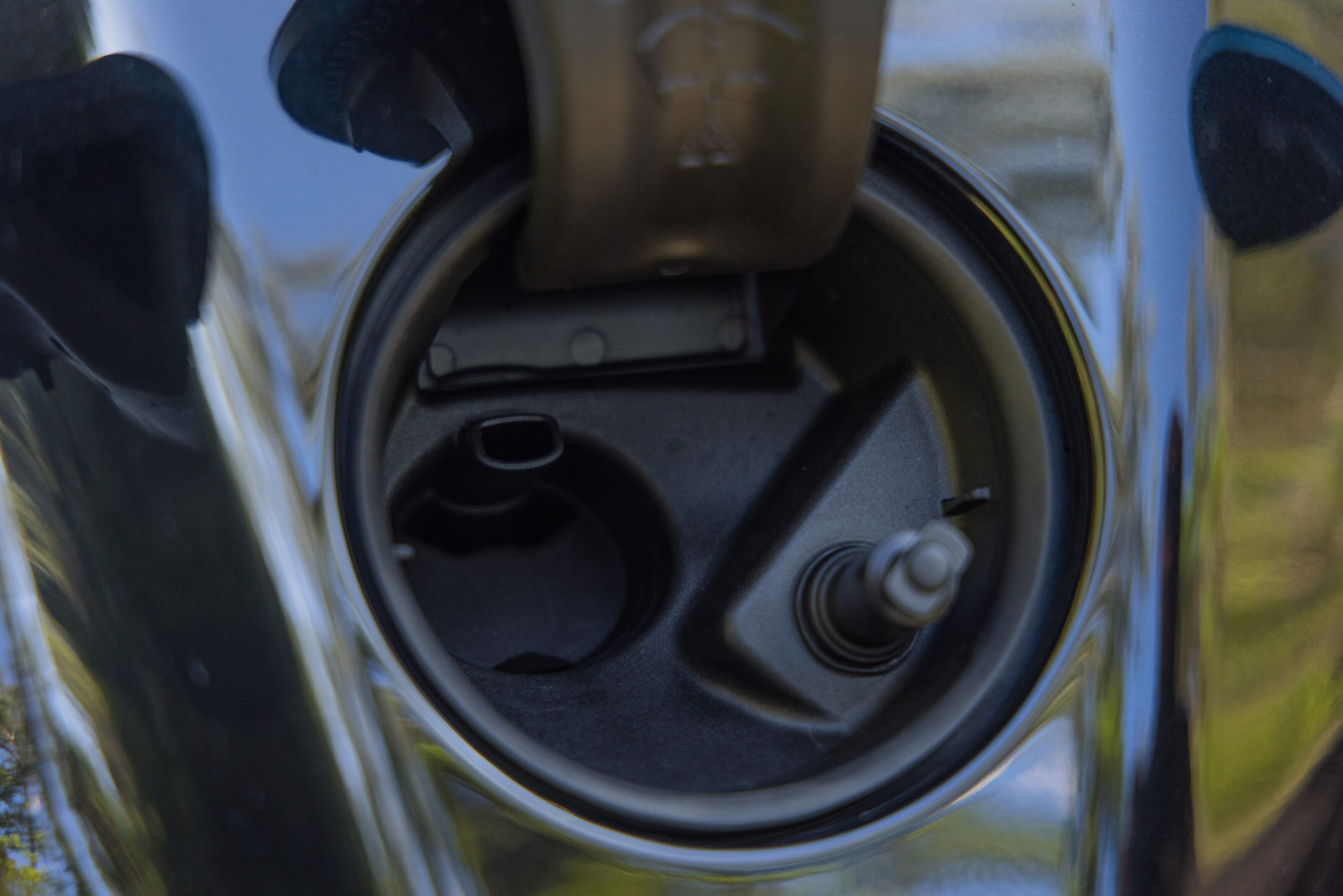
There are caveats and at the time of writing, the network is not only patchy (large slabs of government money are on the way to expand it) but many of the 350kW charging stations are broken, which is a supplier problem rather than a Chargefox problem.
You can pre-pay your servicing for four years at a cost of $1520 and six years for $2195. BMW servicing is “condition-based” but it’s likely you’ll be visiting a dealer every 12 months at worst.
I know this upsets some of the more zealous elements of a certain brand, but I’m a fan of a big complicated box – one that carries around my family and friends – getting a regular once-over.
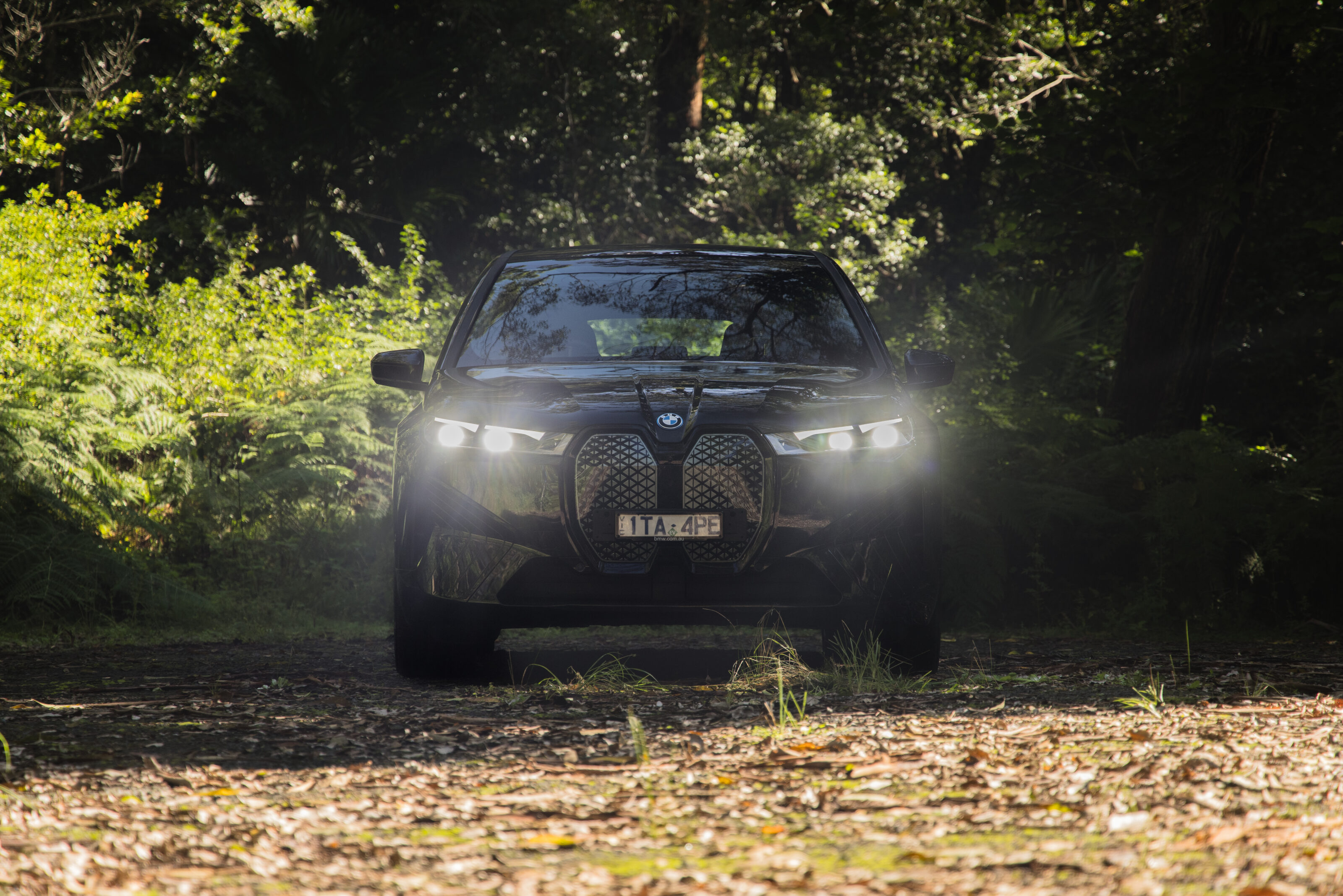
VERDICT
For a car essentially cobbled together from different philosophies, the iX is excellent and feels like it’s all of a piece.
In 40 spec it’s definitely skewed in the general direction of comfort while maintaining plenty of BMW’s trademark sportiness, roadholding and grip. It’s certainly quick enough and it’s a genuinely excellent car, which you should expect given the badge.
Warranty and a slightly disappointing range (for the money) aside, the iX is a bit of a triumph. Striking on the outside, beautiful on the inside, it brings the same sort of sensibility to the SUV that Audi did with the Q8. Stacks of interior space for five people, commanding road presence and in the case of the BMW, a brilliant EV drivetrain.
The iX points to the future of electrified BMWs. If a car pulled together from a lot of different bits makes this good a whole – and it’s not at all obvious unless you do a lot of research – then Neue Klasse EVs from Munich are going to be something to behold.
Related video
Score breakdown
Things we like
- Fantastic interior
- Great to drive
- Nice balance of EV wow and normal car vibes
Not so much
- Short warranty
- Ride can get lumpy
- Needs another few kWhs in the battery
We recommend
-
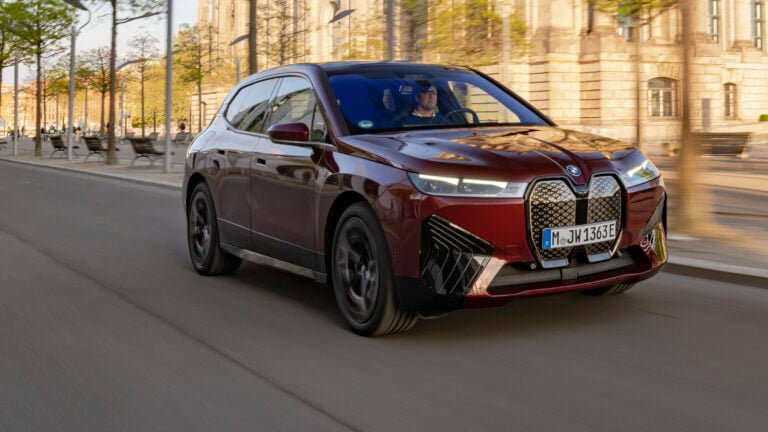 Reviews
Reviews2022 BMW iX M60 review: International first drive
BMW’s iX M60 is the company’s fastest electric vehicle to date but is that enough to earn its stripes?
-
 News
NewsBMW iX local pricing and features revealed
Munich’s new-generation electric SUV due for local launch in quarter four of 2021
-
 News
NewsNew car calendar 2026: All the new cars coming to Australia next year
Here’s the WhichCar by Wheels guide to all the new cars that will launch in Australia in 2026. Check back in regularly for updates...




